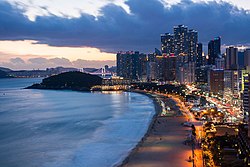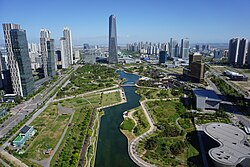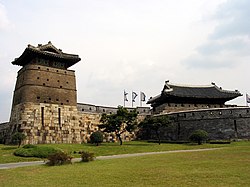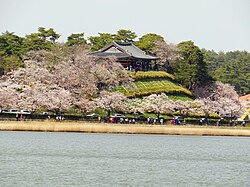

 |
| History |
|---|
| Business culture |
| Industries |
| Regional |
| Related topics |
Tourism in South Korea and its industry caters to both foreign and domestic tourists. [1] [2]
Contents
- Korean tourism industry
- South Korean domestic tourism
- Statistics
- Arrivals
- Total tourist numbers
- Domestic tourism
- Destinations in Korea
- Major tourist destinations
- Events
- See also
- References
- Further reading
- External links
South Korea has 16 World Heritage Sites, including Changdeokgung Palace, Namhansanseong and Hwaseong Fortress. [3] Seoul is the principal tourist destination for visitors; popular tourist destinations outside of Seoul include the major coastal city of Busan, the Seorak-san national park, the historic city of Gyeongju and subtropical Jeju Island. [4]



























